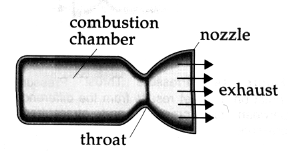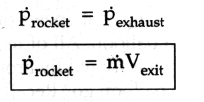Let’s remind ourselves Rocket Science - It's not that hard!
Further to our previous article the three basic parts of the rocket engine are:
1. The Combustion chamber, where the propellant burns, producing hot gasses!
2. The Throat is designed to constrict the flow of hot gasses, which will build up the combustion chamber, controlling the chamber pressure and mass flow rate! Important Notice - The hot gasses reach the speed of sound in the throat!
3. The Nozzle is designed to efficiently direct the flow of gasses in the desired direction!

The gasses have mass and move out the back at some exit velocity, Vexit
For typical chemical rockets like those used by the Space Shuttle, Vexit can be as high as 3 km/s

Linear Momentum: mass x velocity (the mass multiplied by the velocity of the object)
Short Explanation: Momentum is a concept that describes how the motion of an object depends not only on its mass, but also its velocity. Momentum is a vector quantity that depends equally on an object's mass and velocity.
This means that the ejected mass acquires momentum at a rate of
ṁ Vexit
Don’t Forget that Momentum is always conserved
As the momentum of the ejected mass increases in one direction, the momentum of the rocket must likewise be increasing in the other direction.


Hmmm, A lot of Physics? Let’s make a break and we will return with more Rocket Basics in 2020.


